
Sunflower
(Helianthus annuus)
While many of the Eastern Agricultural Complex plants have been largely forgotten and the domesticated varieties lost, that is not the case for the sunflower. Sunflowers are recogized for their ornamental flowers a well as their edible seeds (eaten by people and birds). Many people are not aware that sunflowers were actually domesticated by Indigenous people in the eastern Woodlands by around 2800 B.C. (Fritz 2019; Smith 2014). The ancestors of domesticated sunflowers were native to the Western United States, but made their way to the East and were domesticated here.
Paleoethnobotanists determine whether archeologically collected sunflower seeds are domesticated based on their size. Sunflower seeds got larger as they were domesticated. Sunflower flower heads also increase in size with domestication. Along with larger seeds, there was s a move from many branching stems with many smaller flowers toward sunflowers with a single large flower (Fritz 2019:21).
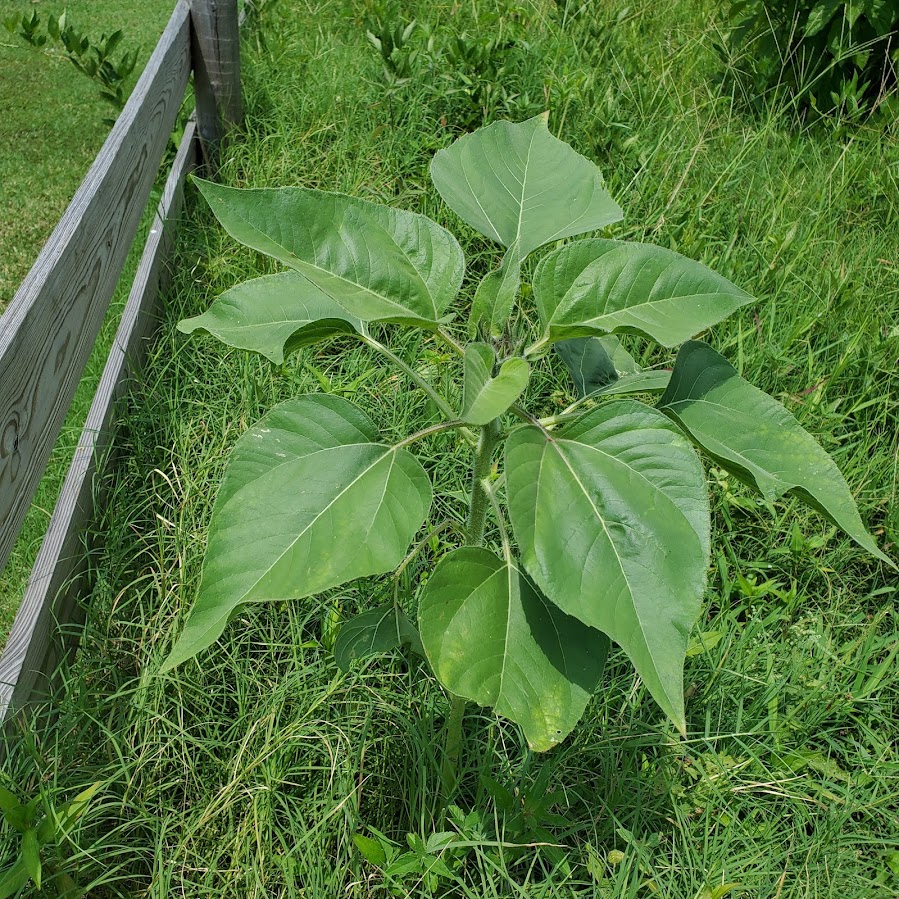
Sunflowers have lovely broad leaves.

The wild progenitors of today's domesticated sunflowers had many branching stems and multiple flowers. As sunflowers became domesticated, they generally became just a singluar stalk with one main flower.

The stems and leaves of sunflowers are tough and hairy.

Sunflowers

Sunflowers bloom from about July to September.

Sunflower
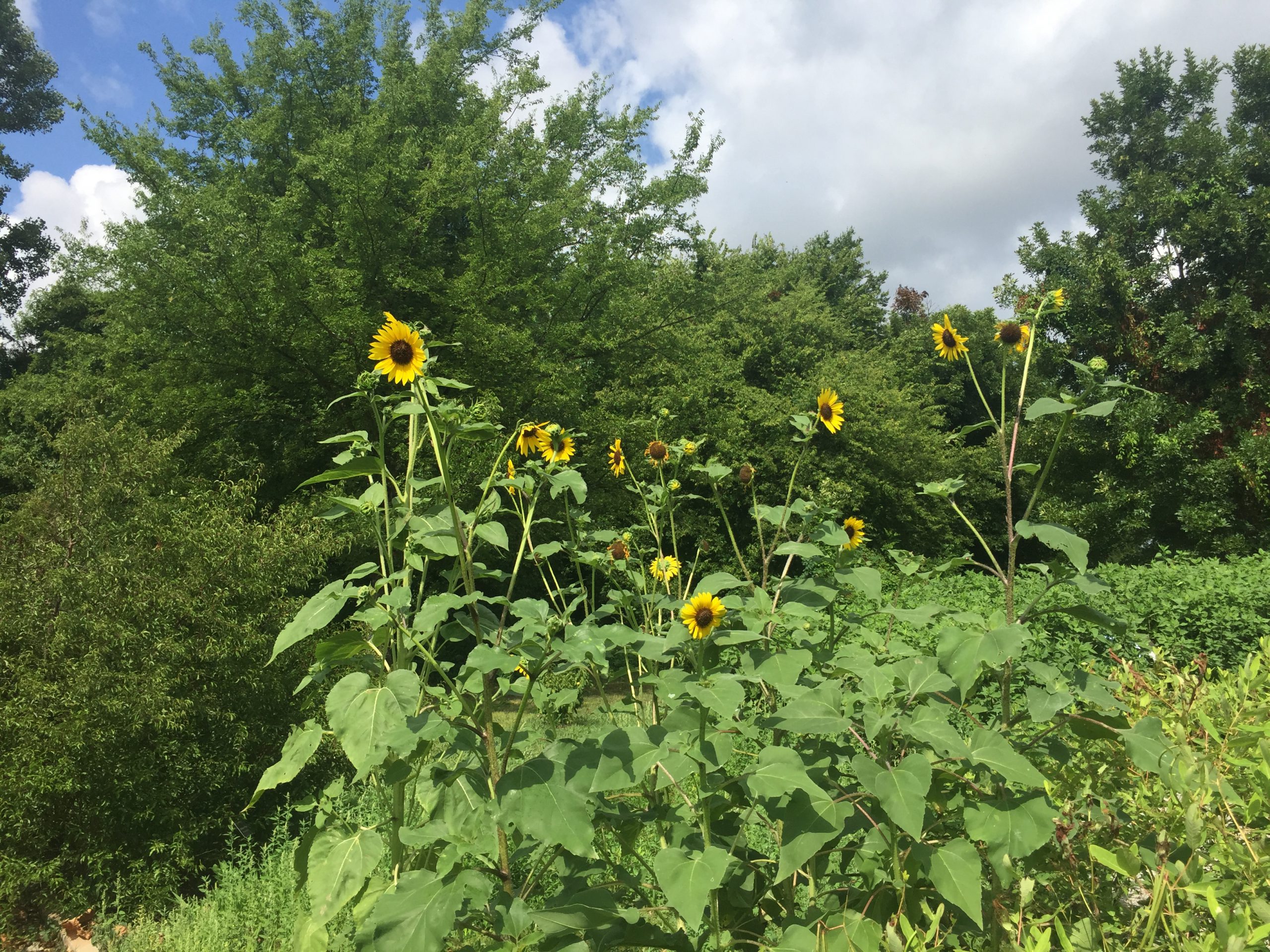
Depending on the variety, sunflowers can get quite tall- up to seven feet or more in height.
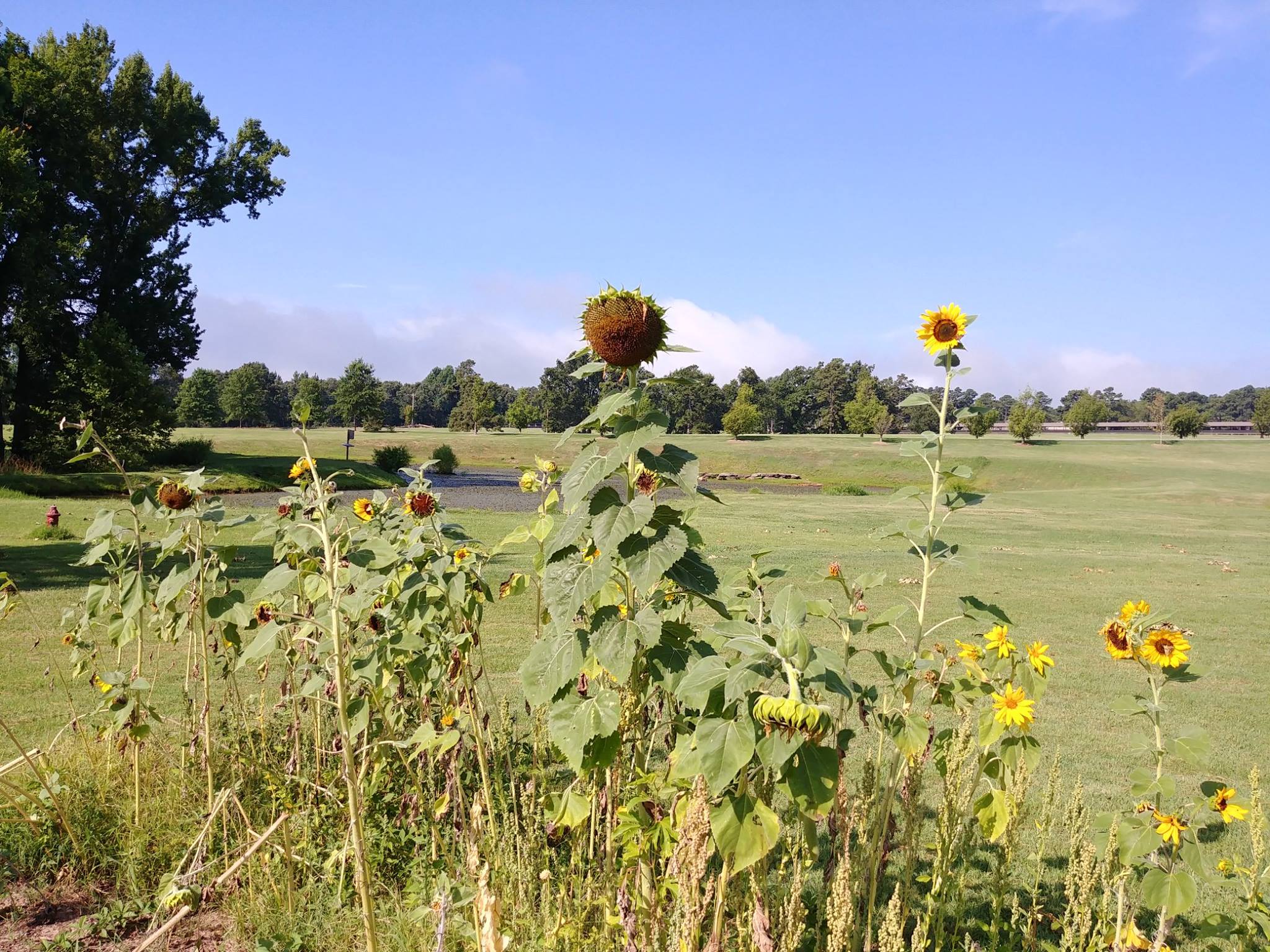
Sunflower seed heads (the center of the flowers) are ready to harvest when the petals fall off and they start to droop down.

Sunflower seed head

Sunflower seed head

Sunflower seed head
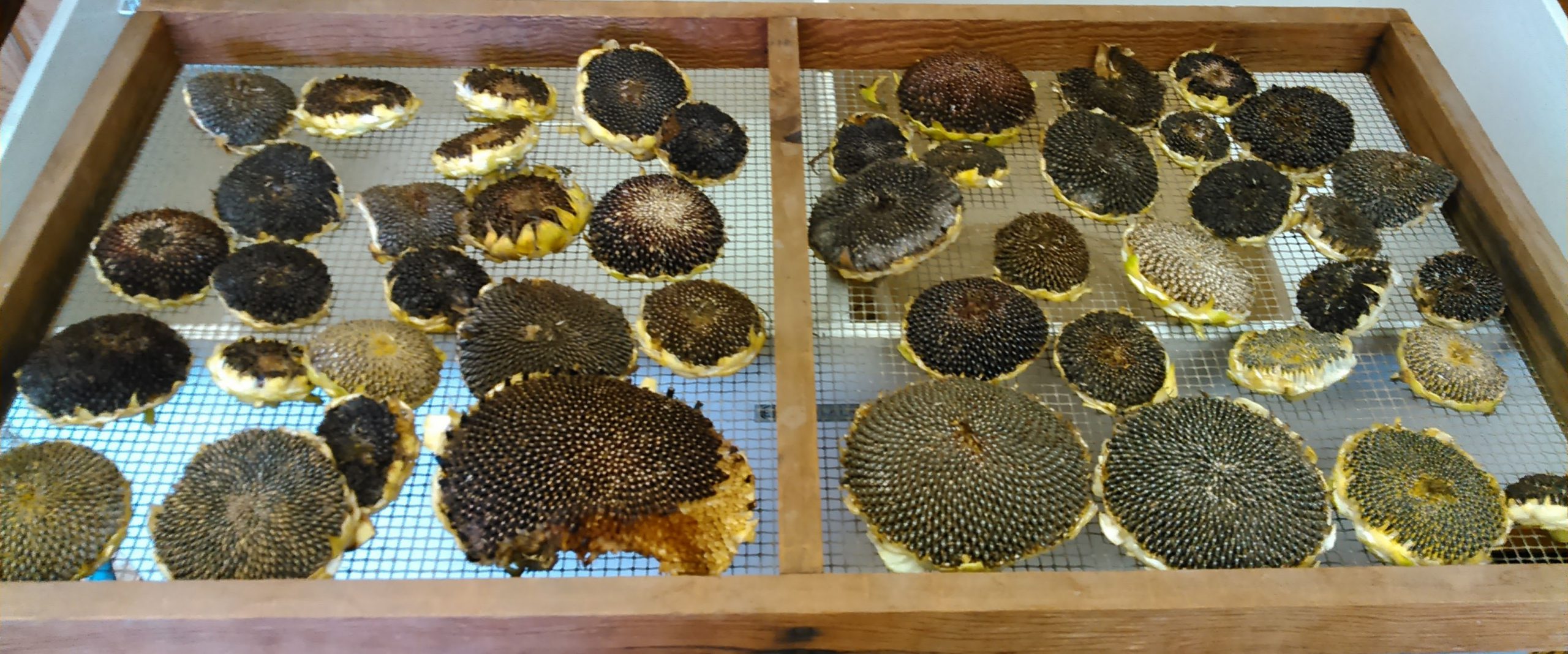
Sunflower harvest
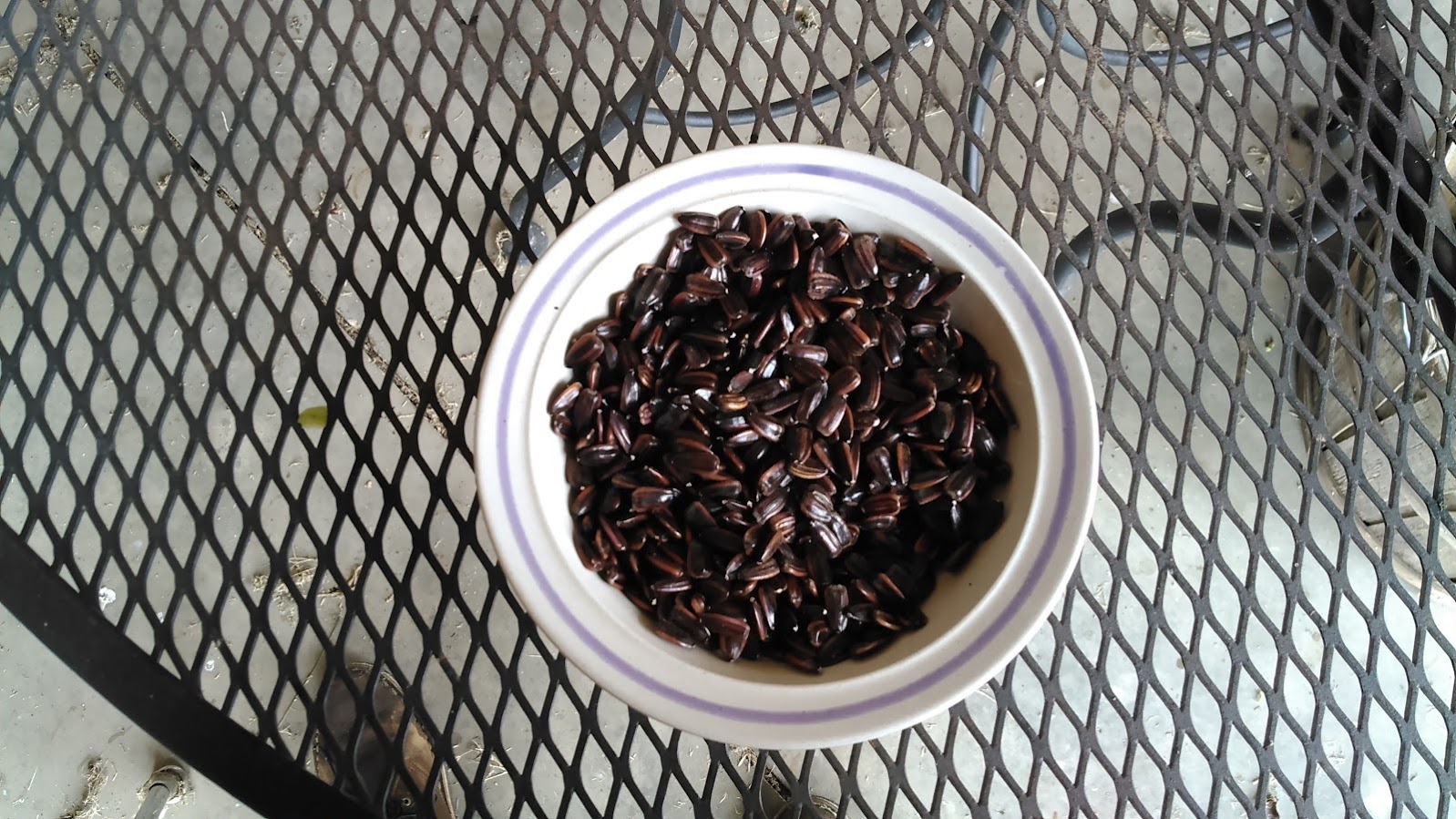
The outer covering of the sunflower seed is tough and inedible. The nutritious part of the seed is the inner kernel. Indigenous people likely chewed on sunflower seeds, extracting the kernels in their mouths much like baseball players do today rather than extracting the kernels by hand.
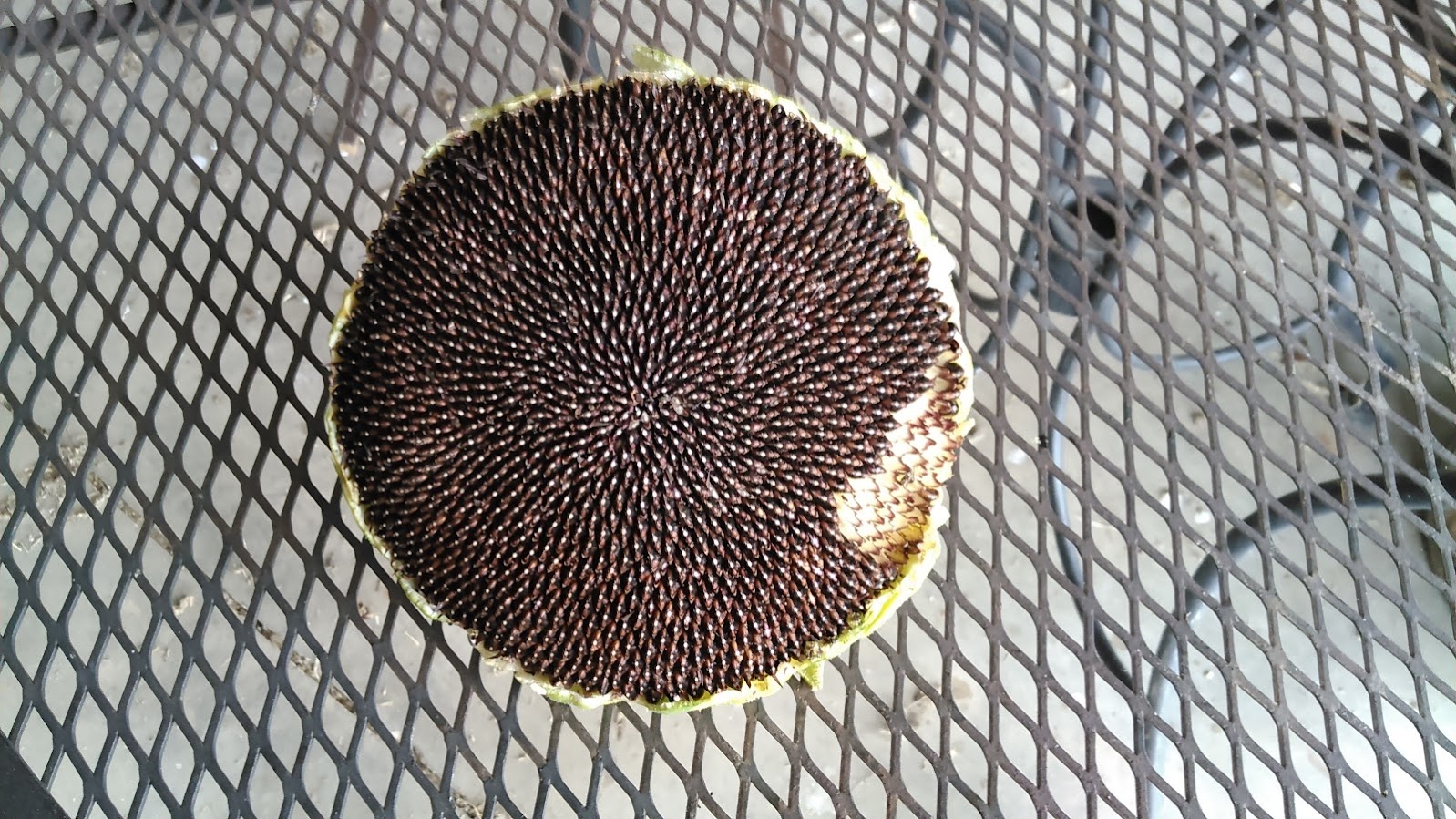
Sunflower seed harvesting

Researchers can distinguish between domesticated and non-domesticated sunflowers based on the size of seeds found archeologically.
Sunflower References
Asch, D. L., and N. B. Asch.
1985 Prehistoric Plant Cultivation in West-Central Illinois. In Prehistoric Food Production in North America, edited by R. I. Ford, pp. 149-203. Anthropological Papers, No. 75. Museum of Anthropology, University of Michigan, Ann Arbor.
Crites, G. D.
1993 Domesticated Sunflower in Fifth Millennium B.P. Temporal Context: New Evidence From Middle Tennessee. American Antiquity 58:146-148.
Fritz, Gaye J.
2019 Feeding Cahokia: Early Agriculture in the North American Heartland. The University of Alabama Press, Tuscaloosa.
Heiser, C. B.
1953 The Archaeological Record of the Cultivated Sunflower with Remarks Concerning the Origin of Indian Agriculture in Eastern North America. Unpublished manuscript.
1985 Some Botanical Considerations of the Early Domesticated Plants North of Mexico. In Prehistoric Food Production in North America, edited by R. I. Ford, pp. 57-72. Anthropological Papers, No. 75. Museum of Anthropology, University of Michigan, Ann Arbor.
Smith, Bruce D.
2014 The Domestication of Helianthus annuus L. (sunflower). Vegetative History and Archeobotany 23:57-74.
Steyermark, J. A.
1963 Flora of Missouri. Iowa State University Press, Ames.
Yarnell, R. A.
1978 Domestication of Sunflower and Sumpweed in Eastern North America. In The Nature and Status of Ethnobotany, edited by R. I. Ford, pp. 289-299. Anthropological Papers, No. 67. Museum of Anthropology, University of Michigan, Ann Arbor.